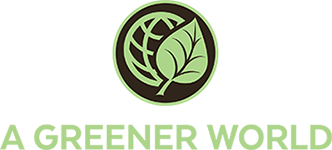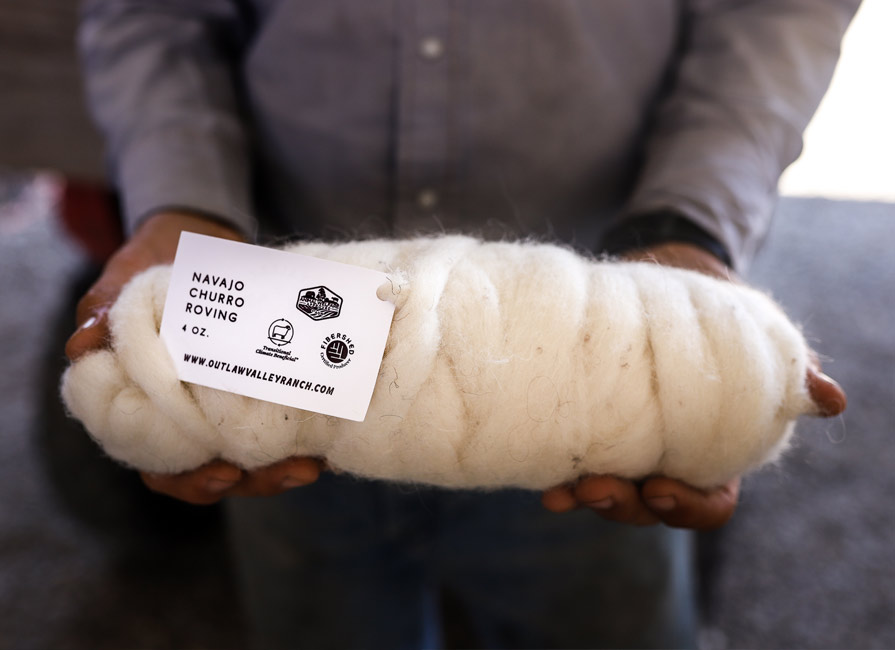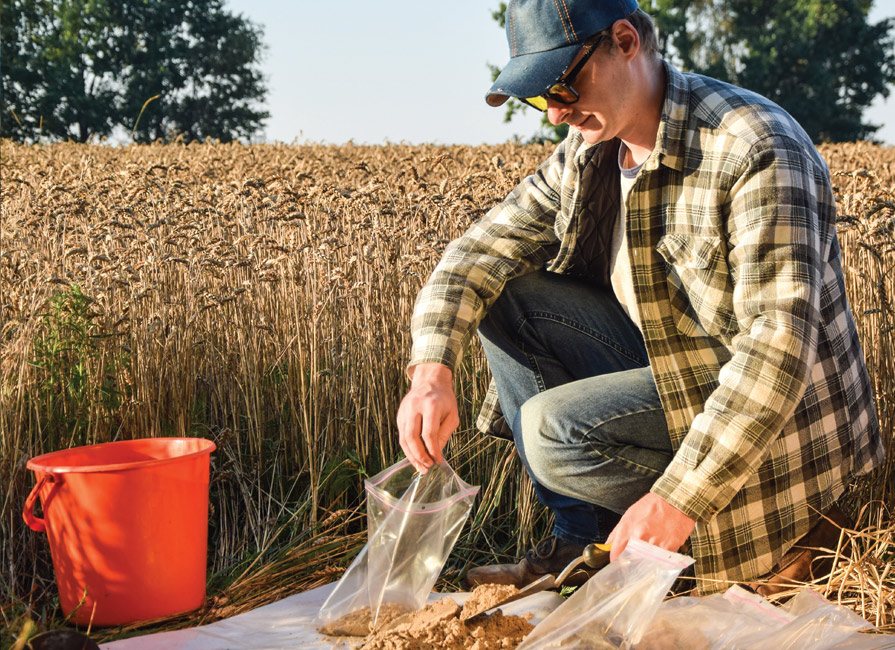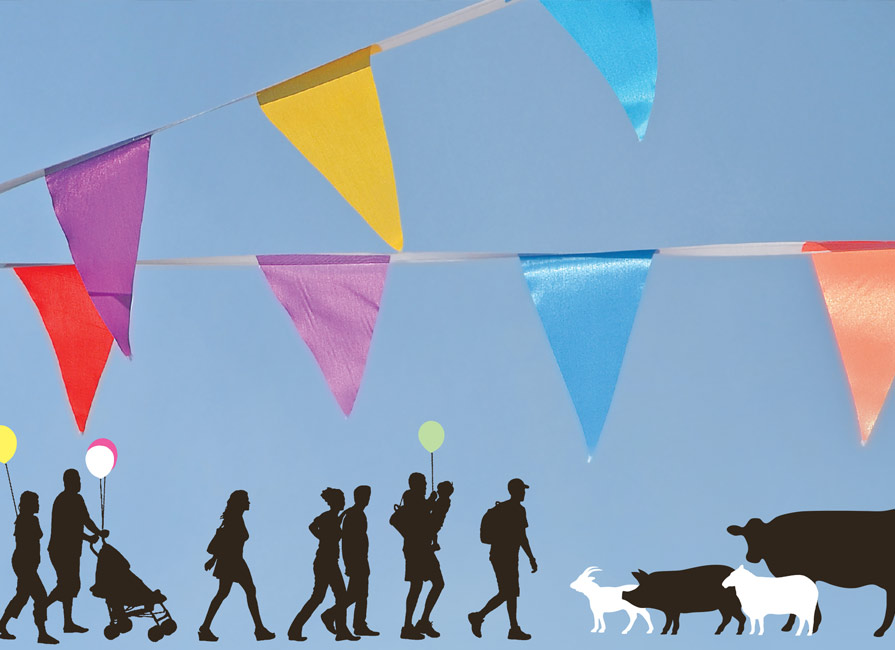Market research shows that today’s consumers are increasingly interested in knowing where their food comes…
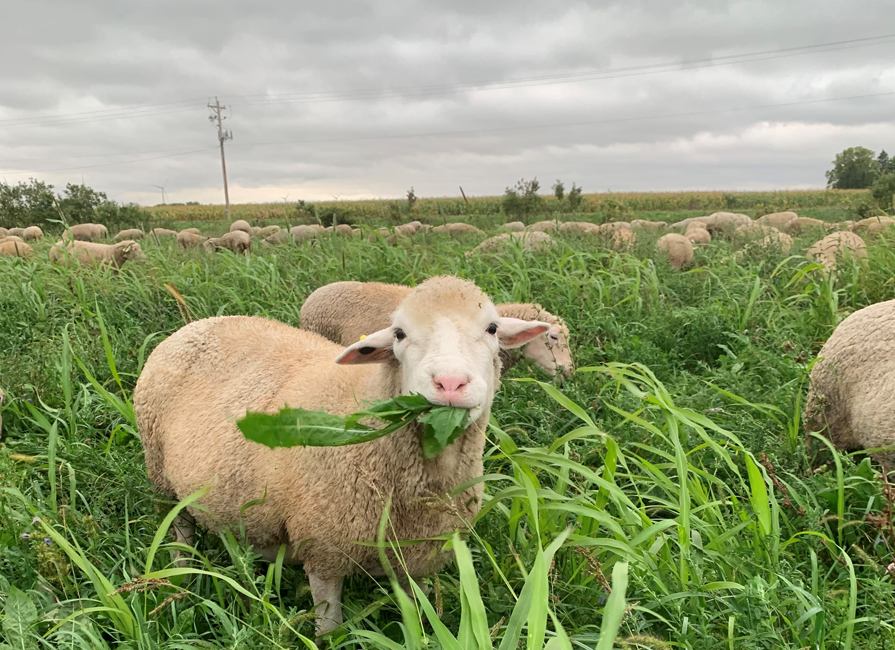
Meet The Farmer – Jump For Jóia
Wendy Johnson and Johnny Rafkin own Jóia Food Farm near Charles City in northeast Iowa, raising Certified AWA and Certified Grassfed by AGW sheep and selling directly to consumers through the farm and through their wool bedding business, Counting Sheep Sleep Company.
What do you farm?
Currently we steward 135 acres of perennial forage, trees and shrubs by addition, and Kernza – a perennial wheatgrass for grain and forage. We are regenerating this land from over 100 years of tillage for corn, and overgrazing in a riparian zone. It is now a perennial-based farm, practicing adaptive grazing, allowing the paddocks to rest for at least 60 days before allowing animals to access it again. We raise Sheep/lambs (AGW), cows/calves, pigs, chickens, and turkeys. Over half the farm is certified organic and the other acres are in transition to organic. We grow trees for hardwood and nuts, shrubs for berries and wildlife, and Kernza. We are really into marrying regenerative and organic practices to grow food for a robust foodshed, and want to grow our farm in size using what we’ve learned on this farm.
How did you get into farming/ranching?
I was lucky enough to grow up on a farm a few miles away from where I live now. My dad was looking for some help in the fall with grain harvest and so when I was living in CA, I came back for a month each year to help. As I became more food aware in CA, I realized I could farm food at a bigger scale than my backyard garden in SoCal while making a meaningful difference in water quality, soil health, and helping mitigate climate change. I felt like I was just a consumer in the city, and I wanted a bigger and more meaningful connection to my food and the food I grow and raise for others. Also, Iowa was and still is a challenge, and I like challenges. Iowa is ground zero, one of the most altered ecosystems in the world, and I wanted to be a part of restoring it piece by piece, because when you witness the life and bounty that comes back from these former prairie soils, it is the most amazing and magnificent thing you’ll ever see.
How did you hear about AWA/AGW?
I understood very clearly and early on in my farming career the importance of animals on the land, their very important role in the ecosystem. And before I even moved to Iowa to farm, I knew that if I was to raise animals for food they would be raised humanely. And to show my dedication to animal welfare to myself and others was to become certified. AWA/AGW stood out to me from other certifiers for their high standards and that I agreed with most.
Describe a typical day in your life…
It is different every day. Really. And I like to change it up. We try to be more preventive and proactive now that we sort of know what we’re doing vs. being reactive and fixing problems all of the time and so it’s a lot easier on us. We also have built up the tools and infrastructure and skills over the last 8 years that help in a big way. So I spend about half my time in the office and half my time outside working physically on the farm. I realized halfway in that we make more money with me in the office than outside doing the work. It’s marketing, bookkeeping, networking, learning, organizing and strategizing that is my skillset, and Johnny my husband loves to keep moving, staying busy physically, so he does the a.m. paddock moves each day and keeps the farm organized and cleaned up. I help as needed. We also do training, so if we have apprentices or interns here we both spend time with them training, mostly through the growing season. I also have a part-time off farm remote work job and I co-manage my family farm, a 1200 conventional row crop farm, that Johnny also works on (that I’m slowly regenerating with some resistance from the older generation).
Sustainable farming principles: why do they matter?
This year is a great example of why it matters. We have entered into a D2 drought off and on throughout the summer with it being official a week or so ago. Driving around Iowa, I see overgrazed pastures and cattle removed from the land because there is no forage left. We have only had 6 inches of rain since May 1 to today, August 11 and our forages are still green and still growing. We have the AUs (animal units) to match up to our acres and we are still grazing and the forage is lush. You allow the land to rest, it bounces back quickly. It is a true testament to rotational grazing. The animals are healthy, their skin coats are shiny, they’re happy, they’re cooler (lush forages help the water cycle!) and they’re not stressed.
Who are your customers?
People who care about animal welfare and healthy meats (meaning they are grassfed, diverse-diet fed, have plenty of room and the outdoors on pasture, don’t feel stress or harm, are chemical free, etc.).
What’s the main benefit of being certified by AGW?
Our customers can trust that we have a certified product that was raised in an environment free of stress or harm. Any farmer can say they’re humane, but a certification speaks volumes. We’ve also have markets open up to us because we are AWA certified. Animal welfare is only becoming more and more of an issue consumers are concerned about. For us, we see it as a necessity.
What are your business plans for the future?
We see the importance of more labeling and certifications to prove our commitments to animal welfare and regenerative and organic agriculture and we want to use our certifications to reach a broader audience across the nation who want our goods. We are growing our wool bedding business and hope to also connect to a company(s) that want regenerative wool in bulk as a raw product. We want to grow our flock by 5 times, as our land needs those numbers, and hopefully the markets for both grassfed lamb and wool open up in the next 5 years.
How can the market for AGW/sustainable food products be improved?
AGW can go directly to companies to show the need for products labeled with the AGW stamp of approval. We are in such a transformative time in agriculture right now with mindset shifts specific to animal welfare that AGW can be up front and center showing the percentage of Americans interested in animal welfare products. You’re basically doing the marketing for the label, I’d like to see more of that intentional marketing. For example, you could talk with Natural Grocers or Thrive and show consumer statistics around animal welfare concerns and build a relationship with those grocers to then buy from aggregated AWA producers, or reach out to your AWA producers to ask if they can raise more.
What is the biggest threat to the sustainable farming movement?
Cheap food – current subsidized cheap food. Price is huge deal for consumers. Subsidy reform is absolutely needed to make sustainably farmed products affordable to the masses. In Iowa, we have something called a Local Food Promotion Program, which buys products at sustainable farmer’s prices and gives the food to food banks, institutions, day cares and senior centers. This is great for us as farmers but unsustainable. If we had subsidy reform or vouchers were given to anyone who qualify, or to those who receive SNAP benefits, or grocers provided reduced rates for sustainably raised foods, that would be a win-win.
If I was President I would…
I think it is very complicated to be President of the U.S. and I’m sure alot of compromises have to be made because you can’t make everyone happy all the time. I just know I don’t want to be in those shoes. But if the question means being able to do anything and getting Congress to also pass what it is I want, I’d make sustainable foods affordable because everyone should be able to eat healthy nutritious food that is grown and raised in the U.S. Americans are in a health and mental health crisis. Food is medicine. And if everyone had access to nutrient dense, real food to eat everyday that was fresh and not processed, and was chemical free, we might all be better off because of it.
What do you love most about what you do?
The freedom. The problem solving. The outdoors. The animals.
Any unusual hobbies or past careers?
I studied fashion design in college and lived in Los Angeles, CA working in the fashion industry for more than a decade before I decided I wanted to be a farmer.
What is your greatest achievement?
I think I’ll be working my whole life to get there.
What’s your vision for the future?
Diversity of species, enterprises and people on the land building resilient communities and cities that have robust food sheds, fiber sheds and grain sheds all across the country.
What single thing would most improve your life?
I think what would make my life easier is if everyone agreed that climate change is happening and the amount of carbon we are pumping into the atmosphere daily is not good, for our continued existence on the planet. If everyone would feel the sense of urgency to make the changes necessary, we would eat and consume differently, which would have a positive effect on the welfare of animals.
FARM AT A GLANCE
FARM: Jóia Food Farm
CERTIFICATION/DATE: December 22, 2017
SIZE: Currently: 45 acres of Kernza, 5 acres of wetland, 55 acres of pasture, 3 acres of pollinator habitat, 7 acres of silvopasture, 3 acres of micro-orchard and windbreak, 15 acres of riparian buffer, 2 acres of farmstead
SOIL TYPE: clay loam majoritively
ANNUAL RAINFALL: 36 inches
ENTERPRISES: 115 ewes and their lambs (AWA and Certified Grassfed by AGW)
Learn more:
- https://www.joiafoodfarm.com/
- https://www.facebook.com/joiafoodfarm/
- https://www.instagram.com/joiafoodfarm/
- https://www.countingsheepsleepco.com/
- https://www.facebook.com/countingsheepsleepco
- https://www.instagram.com/countingsheepsleepcompany/
Originally published in the Fall 2023 issue of AGW’s Sustainable Farming magazine.
